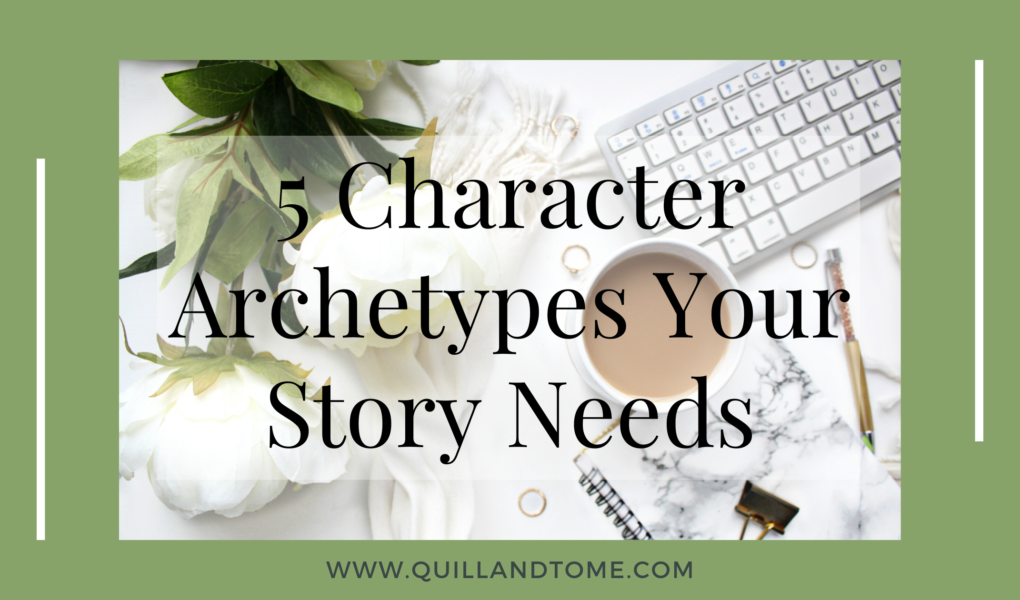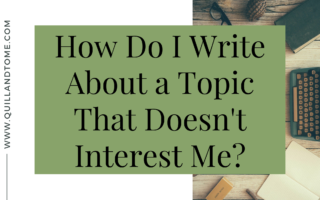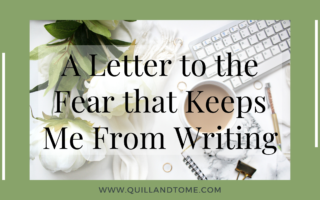**When discussing these character archetypes, there may be potential plot spoilers if you haven’t read Harry Potter, The Hunger Games, or Lord of the Rings**
There are two things that drive a good story: plot and character, and both are vitally important to capturing your reader’s attention. A well-developed character makes your story believable and keeps your readers interested. It is easier for your readers to relate to the character if they have a reason for their actions.
A character archetype is a traditional character that shows up over and over again throughout literature. They are a universal symbol of certain patterns in human nature. Writing a character archetype can be one of the hardest aspects of storytelling. As a writer, you want to make your characters unique, but there are some definite rules for each character archetype.
Depending on who you ask, there are several different character archetypes that you can use. However, there are five character archetypes that show up in almost every story.
The Protagonist
The protagonist is the main character of your story. They are the hero of your story, who experiences most of the challenges, has to make the majority of the decisions, and has to face the consequences of those choices. Protagonists are usually one of two different kinds of heroes, the Reluctant Hero or the Gung-Ho Hero.
The Reluctant Hero
The Reluctant Hero is an everyday character that is forced into the hero’s role. They are usually pretty ordinary, maybe a little boring, and may even resist becoming the hero. Over the course of the story, they are thrown into extraordinary circumstances, but usually just want to get back to how things were. These characters usually have special qualities that make it feel natural to step into the role of hero. For instance, Katniss Everdeen from The Hunger Games is an ordinary girl from District 12, who is thrown into the role of hero when she decides to save her sister during the Reaping.
The Gung-Ho Hero
The Gung-Ho Hero is the larger than life hero. This includes Odysseus from Homer’s Odyssey and comic book heroes like Batman or Ironman. They are often considered ‘the chosen one’ and fully embrace the path of hero throughout the story. These characters do not have to be magical, but they do have to have some sort of power. In Scooby Doo, the Mystery Gang does not have super powers, but they are exceptional at solving mysteries.
While the reluctant hero must have some extraordinary quality, the gung-ho hero has to be able to show some sort of vulnerability. Since characters need to develop over the course of the story, it is common for the hero to switch to the opposite archetype. Harry Potter starts off as an ordinary boy who is thrown into this magical world (reluctant hero), but he develops into a gung-ho hero as the story develops and he steps up to face Voldemort as the Boy Who Lived.
The Antagonist
The antagonist is often referred to as the villain of a story, but they don’t necessarily have to be evil. They just have to stand in the way of your protagonist reaching their goal. In fact, the antagonist doesn’t have to be a person at all. They can be another person (in which case, they could be a villain) or they can be the protagonist themselves. The antagonist can also be something in nature, technology, society, or something supernatural.
Giving your antagonist a reason to do the things they do will make them a better villain. If you make the antagonist purely evil, they will come across as your standard comic book villain, and could potentially fall flat. Remember that every character is the protagonist of their own story. If your villain believes they are acting in the best interest of someone or something, they become more believable and relatable.
The Mentor
The mentor character archetype is one of the most common characters, but also one of the hardest to write. They are the teacher that supports and protects the main character throughout the story. Writers often use the mentor character to tell the background story. While this can work well since the mentor character acts as a guide to the protagonist, it can easily become a crutch to tell and not show different details.
Some of the most famous mentor characters include Gandalf from Lord of the Rings and Dumbledore from Harry Potter. These characters do not always support the actions of Bilbo, Frodo, and Harry, but they are always there to help them through their troubles.
The Love Interest
The protagonist’s love interest can be one of the main characters in your story. However, they can also be a very minor character that still affects the development of the protagonist. Depending on the genre, the love interest could be a part of the main plot, or just a subplot. For instance, the love interest will play a major role in a romance novel, while they may play a very minor role in a fantasy novel.
This character usually falls back in love with the protagonist, but they don’t always, and this can be for the better or worse. This character will either support or resist the main character’s mission, and can be considered one of their greatest strengths or weaknesses, or both.
A character that plays a different supporting role to the protagonist can also play the love interest in a subplot. Ginny Weasley, in Harry Potter, is Ron’s little sister. She is a friend and supporting character throughout the series, but as the story develops, she also steps into the role of Harry’s love interest.
CHECK OUT THE WRITER’S PLANNER BY QUILL AND TOME!
Get the planner and organize your life and your writing!
What you can find inside:
- Plenty of writing space in a vertical layout
- Undated weekly and monthly pages you can start using any day of the year
- Reading and Writing Trackers
- Writing Tips
- and so much more!
The Best Friend or Sidekick
The best friend of the main character plays an important emotional role. The protagonist will confide in their friend and rely on them to help meet their goals. Life would be very boring if we didn’t have friends, and so would stories. The best friends help build a support system for the main character and will often act as a comic relief.
A story is not limited to only one best friend/sidekick. In fact, the Lord of the Rings has Sam, Merry, and Pippin, and Harry Potter has Ron and Hermione. Each friend is different from the protagonist in a very big way. They bring their own strengths and weaknesses to the table, but help the main character reach their goal in the long run.
Over To You
Well developed characters can help you create a story that pulls the readers in. Each character will have specific characteristics that lend themselves to particular character archetypes. These character archetypes occur over and over throughout literature. There are dozens of archetypes, but you can write a fantastic story using just the protagonist, the antagonist, the mentor, the love interest, and the sidekick. Are there any other character archetypes that show up in your stories over and over again? Can you think of any others that need to be on this list?
If you enjoyed this content and are interested in fitting writing into your daily life, DOWNLOAD THE FREE WORKBOOK! Read our monthly newsletter, full of valuable writing advice and be the first to know when we release a new product or book.







